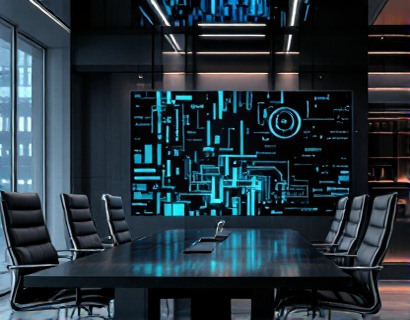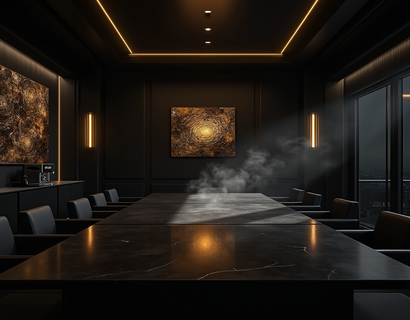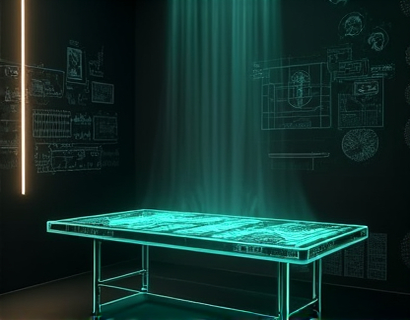Maximizing Architecture Firm Efficiency with Advanced Software Solutions
In the competitive landscape of architecture firms, efficiency and productivity are paramount. Advanced software solutions play a crucial role in streamlining internal processes and enhancing user experience, allowing architects to concentrate on their creative excellence. This article delves into the various ways technology can optimize project management, resource allocation, and client interactions, ultimately leading to improved productivity and collaboration within architecture firms.
Streamlining Project Management
Effective project management is the backbone of any successful architecture firm. Advanced software solutions offer robust tools that simplify the planning, execution, and monitoring of projects. These platforms provide centralized dashboards where project managers can track progress in real-time, assign tasks, set deadlines, and manage budgets. By automating routine tasks such as report generation and status updates, these tools reduce the administrative burden on team members, allowing them to focus on more critical aspects of the project.
One key feature of these software solutions is the ability to integrate with other tools and systems used within the firm. For instance, integration with CAD software ensures that design changes are automatically reflected in the project management system, reducing the risk of errors and miscommunications. This seamless integration enhances the overall efficiency of the project lifecycle, from initial concept to final delivery.
Optimizing Resource Allocation
Efficient resource allocation is essential for maximizing the productivity of an architecture firm. Advanced software solutions provide powerful resource management tools that help firms allocate human and material resources more effectively. These tools enable managers to visualize resource availability, track workloads, and predict potential bottlenecks.
By leveraging data analytics, these platforms can offer insights into resource utilization patterns, helping firms make informed decisions about staffing and equipment allocation. For example, a software solution might highlight that certain team members are consistently overburdened during specific phases of the project, allowing managers to redistribute tasks more evenly. This not only improves overall efficiency but also enhances job satisfaction and reduces burnout among team members.
Enhancing Client Interactions
Client satisfaction is a critical factor in the success of any architecture firm. Advanced software solutions can significantly improve client interactions by providing tools for better communication, collaboration, and project visualization. Virtual reality (VR) and augmented reality (AR) integrations, for instance, allow clients to experience designs in a more immersive and interactive way, leading to clearer understanding and faster decision-making.
Project portals and collaborative platforms enable clients to access real-time updates, view progress, and provide feedback directly within the software. This transparency fosters a stronger relationship between the firm and its clients, as they feel more involved and informed throughout the project lifecycle. Additionally, these platforms often include secure document management systems, ensuring that all project-related documents are easily accessible and version-controlled.
Improving Internal Collaboration
Collaboration among team members is vital for the success of complex architectural projects. Advanced software solutions facilitate better communication and coordination by providing tools that support collaborative work. Features such as real-time commenting, task assignment, and file sharing ensure that everyone is on the same page, reducing the need for lengthy meetings and email chains.
Many of these platforms also support agile methodologies, allowing teams to work in sprints and iteratively refine their designs. This approach not only accelerates the design process but also encourages continuous feedback and improvement. By breaking down projects into manageable chunks, teams can focus on delivering high-quality work in shorter cycles, which can lead to faster project completion and higher client satisfaction.
Boosting Productivity through Automation
Automation is a key driver of productivity gains in architecture firms. Advanced software solutions can automate a wide range of tasks, from routine data entry to complex workflows. For example, automated workflows can trigger specific actions based on predefined conditions, such as sending notifications when a task is completed or when a deadline is approaching.
Another area where automation shines is in the management of repetitive tasks, such as generating standard reports or creating initial design templates. By automating these tasks, team members can focus on more value-added activities that require their expertise and creativity. This not only speeds up the workflow but also reduces the likelihood of human error, leading to higher quality outcomes.
Data-Driven Decision Making
Access to accurate and timely data is crucial for making informed decisions in an architecture firm. Advanced software solutions provide comprehensive analytics and reporting tools that help firms gain insights into various aspects of their operations. These insights can range from project performance metrics to resource utilization trends, enabling managers to identify areas for improvement and optimize processes accordingly.
Data visualization tools within these platforms make it easier to interpret complex data sets, presenting information in a clear and actionable format. For instance, dashboards can display key performance indicators (KPIs) such as project completion rates, client satisfaction scores, and resource utilization rates at a glance. This data-driven approach empowers firms to make strategic decisions that drive growth and efficiency.
Enhancing User Experience
The user experience (UX) of software solutions is a critical factor in their adoption and effectiveness. Advanced architecture software is designed with the end-user in mind, ensuring that tools are intuitive, user-friendly, and tailored to the specific needs of architects and project managers. A positive UX not only increases user satisfaction but also accelerates the learning curve, allowing team members to become proficient more quickly.
Many software solutions offer customizable interfaces, allowing firms to tailor the platform to their unique workflows and preferences. This flexibility ensures that the software adapts to the firm's specific requirements, rather than the other way around. Additionally, regular updates and user feedback loops help developers refine the software, addressing any usability issues and adding new features that meet evolving needs.
Conclusion
In conclusion, advanced software solutions offer architecture firms a comprehensive set of tools to streamline internal processes, enhance user experience, and ultimately maximize efficiency. By leveraging these technologies, firms can focus more on creative excellence while ensuring that project management, resource allocation, and client interactions are optimized for success. As the industry continues to evolve, embracing these innovative solutions will be crucial for staying competitive and delivering high-quality projects.










































